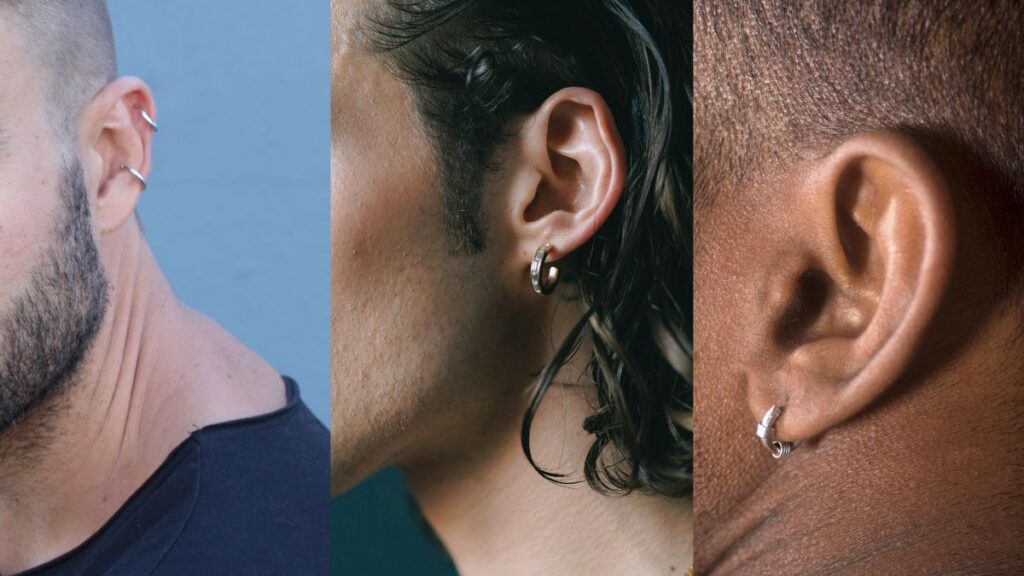The History of Ear Piercing in Men: A Timeless Symbol of Identity and Style

Ear piercing, often perceived as a modern fashion statement, has a rich and diverse history that spans thousands of years. While today it is commonly associated with self-expression and aesthetics, ear piercing in men has historically carried deep cultural, social, and symbolic significance. From ancient civilizations to contemporary trends, the practice has evolved, reflecting shifts in societal norms, gender roles, and personal identity.
Ancient Origins: Status and Spirituality
The history of ear piercing in men dates back to ancient times. Archaeological evidence suggests that men in ancient Egypt, around 1500 BCE, wore earrings as symbols of wealth and status. Pharaohs and high-ranking officials adorned themselves with elaborate gold earrings, signifying their power and divine connection. Similarly, in ancient Persia, male warriors wore earrings as talismans for protection in battle.
In other cultures, ear piercing held spiritual significance. Among Native American tribes, earrings were worn by men to honor their connection to nature and the spirit world. In South Asia, men in regions like India and Nepal pierced their ears as part of religious rituals, believing it enhanced their spiritual awareness and protected them from evil forces.
The Renaissance and Maritime Traditions
During the European Renaissance, ear piercing experienced a resurgence among men, particularly in aristocratic circles. Portraits from the 16th century depict noblemen wearing gemstone-studded earrings, a trend that symbolized refinement and sophistication. However, by the 18th century, ear piercing in men became less common in Europe, as changing fashion norms favored more conservative styles.
Meanwhile, among sailors and pirates, ear piercing took on a different meaning. Sailors believed that wearing a gold earring would cover the cost of their burial if they died at sea. Additionally, some sailors pierced their ears to improve their eyesight, a superstition rooted in ancient acupuncture practices. This maritime tradition cemented ear piercing as a symbol of adventure and resilience.
The 20th Century: Rebellion and Subculture
The 20th century marked a turning point for ear piercing in men, as it became associated with rebellion and counterculture. In the 1950s and 1960s, earrings were adopted by rock ‘n’ roll icons and bikers, challenging traditional gender norms and societal expectations. By the 1970s and 1980s, the punk movement embraced ear piercing as a form of anti-establishment expression, with men often wearing multiple earrings and unconventional jewelry.
During this time, ear piercing also gained traction in the LGBTQ+ community, serving as a subtle yet powerful symbol of identity and solidarity. The placement of earrings, such as the “right ear for straight, left ear for gay” myth, became a coded way for men to express their sexuality in a less accepting era.
Modern Era: Mainstream Acceptance and Fashion
By the late 20th and early 21st centuries, ear piercing in men had entered the mainstream. Celebrities, athletes, and fashion icons popularized the trend, making it a widely accepted form of self-expression. Today, men’s ear piercings are no longer confined to a single ear or style; from studs and hoops to cartilage piercings and gauges, the options are limitless.
The rise of gender-neutral fashion has further normalized ear piercing for men, breaking down outdated stereotypes. Social media platforms like Instagram and TikTok have also played a significant role in showcasing diverse piercing styles, inspiring men to experiment with their looks.
Conclusion: A Legacy of Meaning and Evolution
The history of ear piercing in men is a testament to its enduring appeal and adaptability. What began as a marker of status, spirituality, or protection has transformed into a versatile form of personal expression. As societal attitudes continue to evolve, ear piercing remains a powerful way for men to assert their identity, celebrate their heritage, or simply embrace their individuality.
Whether rooted in tradition or driven by contemporary trends, ear piercing in men is more than just a fashion statement—it is a timeless practice that bridges the past and present, culture and creativity.


